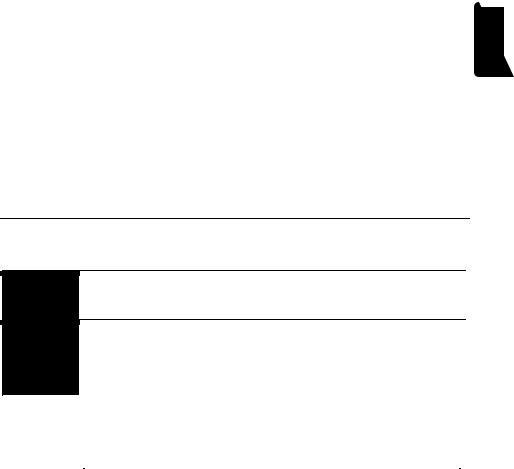
LAW / Referencing for Law Students / AGLC 3rd ed
.pdf
28 Part I — General Rules
The day should not be an ordinal number.
If the day of the week is included in addition to the full date, the name of the day should precede the full date and should not be followed by a comma.
Examples 15 June 1985 [Not: 15th June 1985]
Thursday 6 March 1987 [Not: Thursday, 6 March 1987]
1.13.2Spans of Dates
|
Rule |
|
Spans of years should include the first year in full, an en-dash, and the |
||
|
|
|
last two digits of the final year. However, if the final year occurs in a |
||
|
|
|
different century from the first, the final year should appear in full. |
||
|
|
|
Spans of days in the same month should include both dates in full |
||
|
|
|
separated by an en-dash. Spans of dates over different months and |
||
|
|
|
spans of full dates should be separated by a spaced en-dash. |
||
|
|
|
|
|
|
|
Examples |
|
1986–87 |
1999–2009 |
|
|
|
|
21–22 September [Not: 21–2] |
17 |
July – 19 August |
|
|
|
1 January – 29 February 1996 |
22 |
March 1946 – 27 August 1947 |
|
|
|
|
|
|
1.13.3Decades and Centuries
Rule When referring to decades, an apostrophe should not be placed between the year and the ‘s’. If only the last two digits of the year are included, an apostrophe should precede them.
Centuries should be indicated using ordinal numbers (which should adhere to rule 1.12.1).
Examples 1970s or ’70s [Not: 1970’s or ’70’s] 21st century

Australian Guide to Legal Citation |
29 |
1.14Names
1.14.1General Rule
Rule Initials in names should be separated by a space and should not be followed by full stops (see rule 1.6.1).
Conventional titles such as ‘Ms’ or ‘Mr’ may be included in discursive text before a person’s name (in both the body and the footnotes), but should not be included in authors’ names in citations.
Honorific titles or titles indicating qualification, such as ‘the Hon’, ‘Dr’ or ‘Professor’, may be included in discursive text (in both the body and the footnotes) before a person’s name. They should not be used in an author’s name in citations, except for ‘Sir’, ‘Dame’ and peerage titles (such as ‘Lord’, ‘Baroness’, ‘Earl’ and ‘Viscount’).
Postnominals, such as ‘AM’ (Member of the Order of Australia) and ‘LLB’ (Bachelor of Laws), should not be included after the name of an individual in either the text or the footnotes (unless relevant). They should never be included after the name of an author in a citation.
|
Examples |
|
|
|
|
|
|
|
|
|
Referring to an individual |
|
Referring to an author in a |
|
|
|
|
|
|
discursively in the text or |
|
citation: |
|
|
|
|
|
footnotes: |
|
|
|
|
|
|
|
|
|
|
|
|
|
|
|
Associate Professor Tania Voon |
|
Tania Voon |
|
|
|
|
|
Dame Nellie Melba |
|
Dame Nellie Melba |
|
|
|
|
|
Lord Nicholls |
|
Lord Nicholls |
|
|
|
|
|
Professor Ian Malkin |
|
Ian Malkin |
|
|
|
|
|
Baroness Hale |
|
Baroness Hale |
|
|
|
|
|
Dr Cockburn |
|
John Cockburn |
|
|
|
|
|
Ms Sharon Rodrick |
|
Sharon Rodrick |
|
|
|
|
|
Mr Gageler SC |
|
Stephen Gageler |
|
|
|
|
|
H L A Hart |
|
H L A Hart |
|
|
|
|
|
|
|
|
|
General
Rules

30 Part I — General Rules
1.14.2Authors of Secondary Sources
Rule In citations to secondary sources, authors’ names should appear exactly as they do on the source (subject to the other rules in this chapter). This may require the same author’s name to appear differently in citations to several of their works.
Where there are two or three authors, the names of all authors should be included and the word ‘and’ should separate the names of the last two authors. All surnames should be included in ‘above n’ references.
Where there are more than three authors, the surname of the author appearing first on the source should be included, followed by ‘et al’. The first listed author’s surname and ‘et al’ should be included in ‘above n’ references.
Examples 14 P D Finn, ‘The Fiduciary Principle’ in T G Youdan (ed), Equity, Fiduciaries and Trusts (Carswell, 1989) 1, 4. [Not: Paul Finn, ‘The Fiduciary Principle’ …]
15Kathy Bowrey and Natalie Fowell, ‘Digging Up Fragments and Building IP Franchises’ (2009) 31 Sydney Law Review 185.
16Robert Cryer et al, An Introduction to International Criminal Law and Procedure (Cambridge University Press, 2007). [Not: Robert Cryer, Håkan Friman, Darryl Robinson and Elizabeth Wilmshurst, …]
…
19Bowrey and Fowell, above n 15, 187.
20Cryer et al, above n 16, 124.
1.14.3Publications Authored by or Produced on Behalf of a Body
Rule If a publication is authored by a body (for example, a government department or a non-governmental organisation), the name of that body should appear as the author.

Australian Guide to Legal Citation |
31 |
Where a government department is the author and the jurisdiction is not apparent from the department’s name, the abbreviated jurisdiction may be included in parentheses after the department’s name. The abbreviations in rule 3.1.3 should be used.
If a subdivision of a body or an individual writing on behalf of a body is the author, both the name of the subdivision or individual and the body should be included in the form:
Individual/Subdivision , Body
Where there are multiple subdivisions, only the most specific subdivision should be included (unless this creates ambiguity).
Examples Queensland Government, ClimateSmart 2050 — Queensland Climate Change Strategy 2007: A Low Carbon Future (2007).
Department for Women (NSW), Heroines of Fortitude: The Experiences of Women in Court as Victims of Sexual Assault (1996).
Criminal Justice Sexual Offences Taskforce, Attorney-General’s Department (NSW), Responding to Sexual Assault: The Way Forward
(2006).
Russell Cocks, Law Institute of Victoria, Ethics Handbook: Questions and Answers (2004) 133.
1.14.4Judges
Rule Judges writing curially (that is, in a judgment) should be referred to by their surname and their judicial title (such as ‘Justice’) or peerage title (such as ‘Lord’), both in the text and in citations. Typically, but not always, the judicial title should be indicated by an abbreviation placed after the judge’s name (in accordance with rules 2.9.1, 9.2.8, 23.1.6 and 24.1.8). Honorifics (such as ‘the Hon’) should not be included when citing a judge writing curially. Where a judge’s first name or initials appear on a case and are necessary to unambiguously identify the judge, they should be included.
General
Rules

32 Part I — General Rules
When citing a judge writing extra-curially (both in the text and in citations), the unabbreviated judicial or peerage title (such as ‘Justice’ or ‘Chief Justice’) should be included before the judge’s name, unless the judge has a title (such as ‘Sir’, ‘Dame’ or a peerage title) that makes a judicial title unnecessary.
When citing a former judge (writing extra-curially), their former judicial title should not be included. ‘Sir’, ‘Dame’ or any peerage title should be included. Honorifics may be included in the text, but not in citations (in accordance with rule 1.14.1).
In both curial and extra-curial writing, any territorial designation of a peer (such as ‘of Chieveley’) should not be included unless necessary to avoid confusion.
|
Examples |
|
|
|
|
|
|
|
|
|
|
|
Context |
Example(s) |
|
|
|
||
|
|
|
|
|
|
|
|||
|
|
|
|
Citing a judge writing |
As Dixon J noted in Essendon Corporation v |
|
|||
|
|
|
|
curially (in text): |
Criterion Theatres Ltd, … |
|
|
|
|
|
|
|
|
|
|
|
|
|
|
|
|
|
|
Citing a judge writing |
58 |
Essendon Corporation |
v Criterion |
Theatres |
|
|
|
|
|
curially (in a citation): |
|
Ltd (1947) 74 CLR 1, 18 (Dixon J). |
|
|
|
|
|
|
|
|
|
|
|||
|
|
|
|
Citing a judge writing |
Opening the Law Librarians’ Symposium, |
|
|||
|
|
|
|
extra-curially (in text): |
Sir Daryl Dawson stated: ‘The modern law library |
|
|||
|
|
|
|
|
is something which I could not have envisioned in |
|
|||
|
|
|
|
|
my student days.’ … Justice Virginia Bell … Lord |
|
|||
|
|
|
|
|
Hoffmann … |
|
|
|
|
|
|
|
|
|
|
|
|
|
|
|
|
|
|
Citing a judge writing |
99 |
Sir Anthony Mason, |
‘Future Directions in |
|
|
|
|
|
|
extra-curially (in a |
|
Australian Law’ (1987) 13 Monash Law |
|
||
|
|
|
|
citation): |
|
Review 149; Lord Cooke, ‘Foreword’ in Janet |
|
||
|
|
|
|
|
|
McLean (ed), Property and the Constitution |
|
||
|
|
|
|
|
|
(Hart Publishing, 1999) v; Justice Michael |
|
||
|
|
|
|
|
|
Kirby, ‘Transnational |
Judicial |
Dialogue, |
|
|
|
|
|
|
|
Internationalisation of Law and Australian |
|
||
|
|
|
|
|
|
Judges’ (2008) 9 Melbourne Journal of |
|
||
|
|
|
|
|
|
International Law 171. |
|
|
|
|
|
|
|
Citing a former judge |
As pointed out by the Hon Mary Gaudron in a |
|
|||
|
|
|
|
(in text): |
recent speech, … |
|
|
|
|
|
|
|
|
|
|
|
|
|
|
|
|
|
|
|
|
|
|
|
|

|
|
|
Australian Guide to Legal Citation |
33 |
|
|
|
|
|
|
|
|
|
|
|
|
|
|
|
Citing a former judge |
104 Michael Kirby, ‘The Dreyfus Affair — |
|
|
|
|
(in a citation): |
Lessons for Today’ (Speech delivered at the |
|
|
|
|
|
Melbourne Law School, Melbourne, 1 |
|
|
|
|
|
September 2009). |
|
|
|
|
Including the territorial |
This was a different approach from that of Lord |
|
|
|
|
designation of a peer |
Nicholls. [Not: … Lord Nicholls of Birkenhead] |
|
|
|
|
|
But: Lord Keith of Avonholm had a very |
|
|
|
|
|
different view of negligence from that held by |
|
|
|
|
|
Lord Keith of Kinkel. |
|
|
|
|
|
|
|
|
|
|
|
|
|
|
General
Rules
1.15Headings and Titles
1.15.1Title and Author
Rule Titles should be capitalised, centred and in bold type. The name(s) of the author(s) should be in large and small capitals and centred.
Example REFLECTIONS ON THE WORLD TRADE ORGANIZATION AND THE PROSPECTS FOR ITS FUTURE
BRYAN MERCURIO*
1.15.2Heading Levels
|
Rule |
|
|
Headings should appear as follows: |
|
|
|
|
|
|
|
|
|
|
|
|
|
|
|
Heading Level |
|
Attributes |
|
|
|
|
|
|
|
|
|
|
|
|
|
I HEADING LEVEL ONE |
|
Upper-case Roman numeral not |
|
|
|
|
|
|
|
italicised; heading in large and |
|
|
|
|
|
|
|
small capitals and centred |
|
|
|
|
|
|
|
|
|
|
|
|
|
A Heading Level Two |
|
Upper-case letter not italicised; |
|
|
|
|
|
|
|
heading italicised and centred |
|
|
|
|
|
|
|
|
|
|
|
|
|
1 Heading Level Three |
|
Arabic numeral not italicised; |
|
|
|
|
|
|
|
heading italicised and left-aligned |
|
|
|
|
|
|
|
|
|
|
|
|
|
(a) Heading Level Four |
|
Lower-case letter and heading |
|
|
|
|
|
|
|
italicised and left-aligned |
|
|
|
|
|
|
|
|
|
|
|
|
|
|
|
|
|

34 Part I — General Rules
|
|
(i) Heading Level Five |
Lower-case Roman numeral and |
|
|
|
heading italicised and left-aligned |
|
|
|
|
|
|
|
|
Capitalisation in headings should adhere to rule 1.7.
1.16Bibliographies
Rule Where a bibliography is required, it should list all sources that were relied upon (not only those referred to in the text and footnotes).
The bibliography may be divided into the sections below. However, a section may be omitted and other categories or subdivisions may be included as needed (with appropriate renumbering).
AArticles/Books/Reports
BCases
CLegislation
DTreaties
EOther
All sources listed in the bibliography should be cited as set out in these rules (cases should be set out as if referred to in the text). However:
•an author’s first name and surname should be inverted and separated by a comma — for works by two or more authors, only the first author’s name and surname should be inverted; and
•full stops should not follow the citations.
Sources should be listed in alphabetical order according to:
•the surname of the first-listed author;
•where the author is an institution, the first word of the name of the institution (excluding ‘the’); or
•where there is no author, the first word of the title.

Australian Guide to Legal Citation |
35 |
Where two authors have the same surname, the authors should be sorted alphabetically according to their first names. Where more than one work by an author is listed, the works should be listed in chronological order.
Example |
BIBLIOGRAPHY |
|
|
|
A Articles/Books/Reports |
|
Eastwood, Christine, Sally Kift and Rachel Grace, ‘Attrition in Child |
|
Sexual Assault Cases: Why Lord Chief Justice Hale Got It Wrong’ |
|
(2006) 16 Journal of Judicial Administration 81 |
|
Foster, Michelle, International Refugee Law and Socio-Economic |
|
Rights: Refuge from Deprivation (Cambridge University Press, 2007) |
|
B Cases |
|
Lane v Morrison [2009] HCA 29 (26 August 2009) |
|
Northern Cameroons (Cameroon v United Kingdom) (Preliminary |
|
Objections) [1963] ICJ Rep 15 |
|
C Legislation |
|
Aerodrome Landing Fees Act 2003 (Vic) |
|
Australian Constitution |
|
D Treaties |
|
Convention against Torture and Other Cruel, Inhuman or Degrading |
|
Treatment or Punishment, opened for signature 10 December 1984, |
|
1465 UNTS 85 (entered into force 26 June 1987) |
|
E Other |
|
New South Wales, Parliamentary Debates, Legislative Assembly, 15 |
|
December 1909 |
|
|
General
Rules

|
|
|
|
|
|
|
|
37 |
|
|
2 |
Cases |
|
|
|
|
|
|
|
||
|
|
|
|
|
|
|
|
|
|
|
|
|
Examples |
R v Tang |
(2008) |
237 |
CLR |
1 |
, 7 |
|
|
|
|
|
|
|
|
|
|
|
|
|
|
|
Bakker v Stewart |
[1980] |
|
VR |
17 |
, 22 |
|
|
|
|
|
|
|
|
|
|||||
|
|
|
|
Cases |
||||||
|
|
|
|
|
|
|
|
|
|
|
|
|
Element |
Case Name |
Year |
Volume |
Series |
Page |
Pinpoint |
|
|
|
|
|
|
|
|
Law Report |
Starting |
|
|
|
|
|
|
|
|
|
|
|
|
|
|
|
|
Rule |
2.1 |
2.2 |
2.2 |
2.3 |
2.4 |
2.5 |
|
|
|
||||||||||
|
|
|
|
|
|
|
|
|
|
|
2.1Case Name
2.1.1Parties’ Names — General Rule
Rule
Examples
A citation to an Australian case should include the parties’ names in italics as they appear on the first page of the report, except that:
•punctuation should adhere to rule 1.6.1 (so full stops should not be used in abbreviations);
•capitalisation should adhere to rule 1.7;
•where the parties are individuals, given names and initials should be omitted;
•only the first plaintiff and first defendant should be cited (‘& Anor’ or ‘& Ors’ should not be used to indicate other parties); and
•where the case involves more than one action, only the first action should be cited.
Alati v Kruger (1955) 94 CLR 216.
Momentum Productions Pty Ltd v Lewarne (2009) 254 ALR 223. [Not: Momentum Productions Pty Ltd v Richard John Lewarne …]
Hot Holdings Pty Ltd v Creasy (1996) 185 CLR 149. [Not: Hot Holdings Pty Ltd v Creasy and Ors …]
Tame v New South Wales (2002) 211 CLR 317. [Not: Tame v New South Wales; Annetts v Australian Stations Pty Ltd …]

38 Part II — Domestic Sources
2.1.2Business Corporations and Firms
Rule
Examples
Where a party is a business corporation or firm, the following abbreviations should be used:
|
Word |
|
|
Abbreviation |
|
|
|
|
|
||
|
|
|
|
|
|
|
and |
& |
|
||
|
Company |
|
Co |
||
|
Limited |
|
Ltd |
||
|
Proprietary |
Pty |
|||
|
Incorporated |
|
Inc |
||
|
(in liquidation) |
|
(in liq) |
||
|
(in provisional liquidation) |
(in prov liq) |
|||
|
(administrator appointed) |
|
(admin apptd) |
||
|
(manager appointed) |
|
(mgr apptd) |
||
|
(receiver appointed) |
|
(rec apptd) |
||
Other (including foreign) words and phrases designating corporate status (for example, GmbH, AG, plc, SA, Sarl, etc) or a special status under incorporation legislation (for example, rec and mgr apptd) should be abbreviated according to convention.
‘Trading as’ or ‘t/as’, trading names and former company names should not be included.
Where ‘the’ forms part of a company or firm name, it should be included.
Andrew Shelton & Co Pty Ltd v Alpha Healthcare Ltd (2002) 5 VR 577.
Australian Competition and Consumer Commission v C G Berbatis Holdings Pty Ltd (2003) 214 CLR 51.
Lumbers v W Cook Builders Pty Ltd (in liq) (2008) 232 CLR 635. [Not: … Pty Ltd (in liquidation) …]
Olivaylle Pty Ltd v Flottweg GmbH & Co KGaA [No 3] (2008) 76 IPR 152.
The Mond Staffordshire Refining Co Ltd v Harem (1929) 41 CLR 475. [Not: Mond Staffordshire Refining Co Ltd v Harem trading as ‘Mulsol’ Laboratories …]
